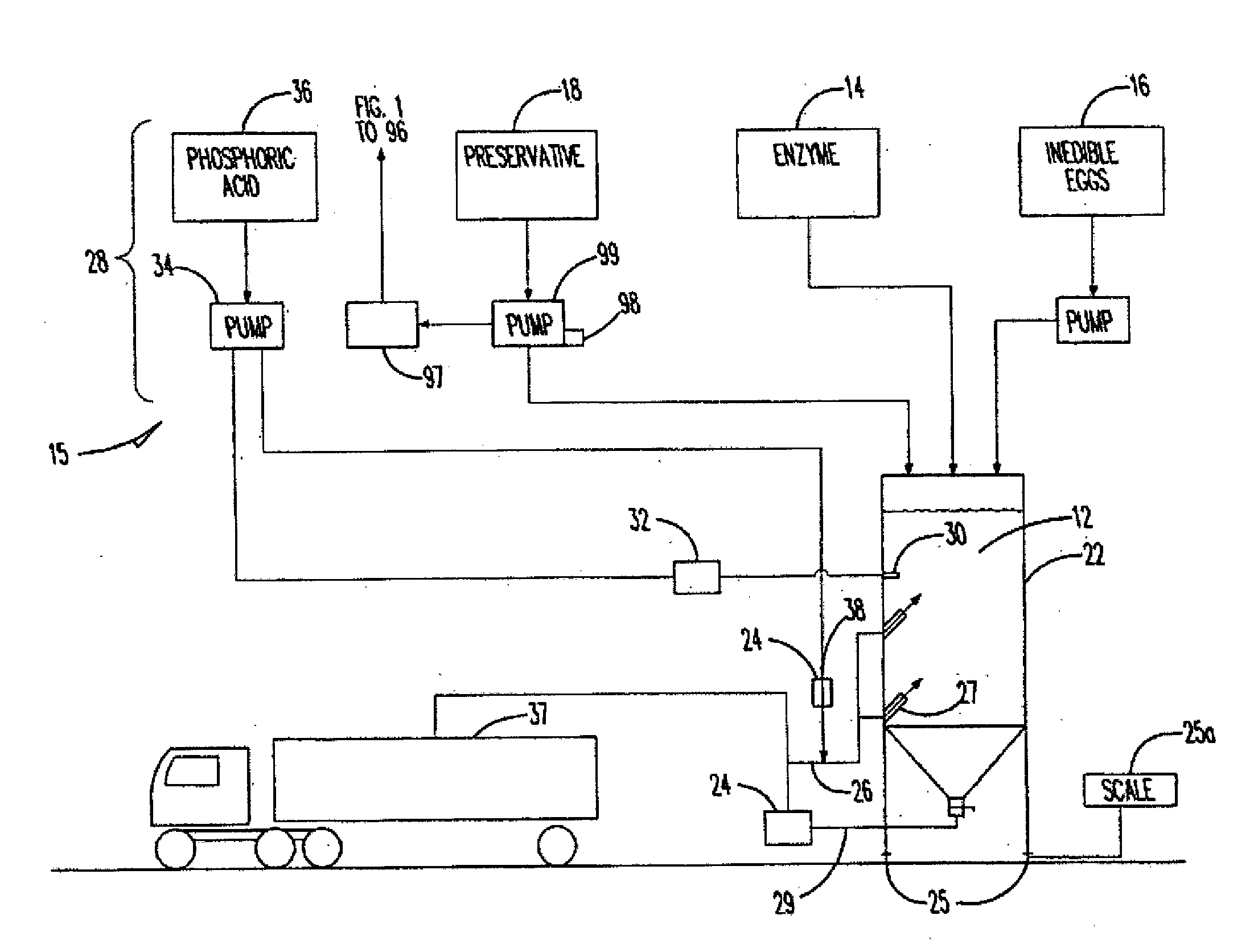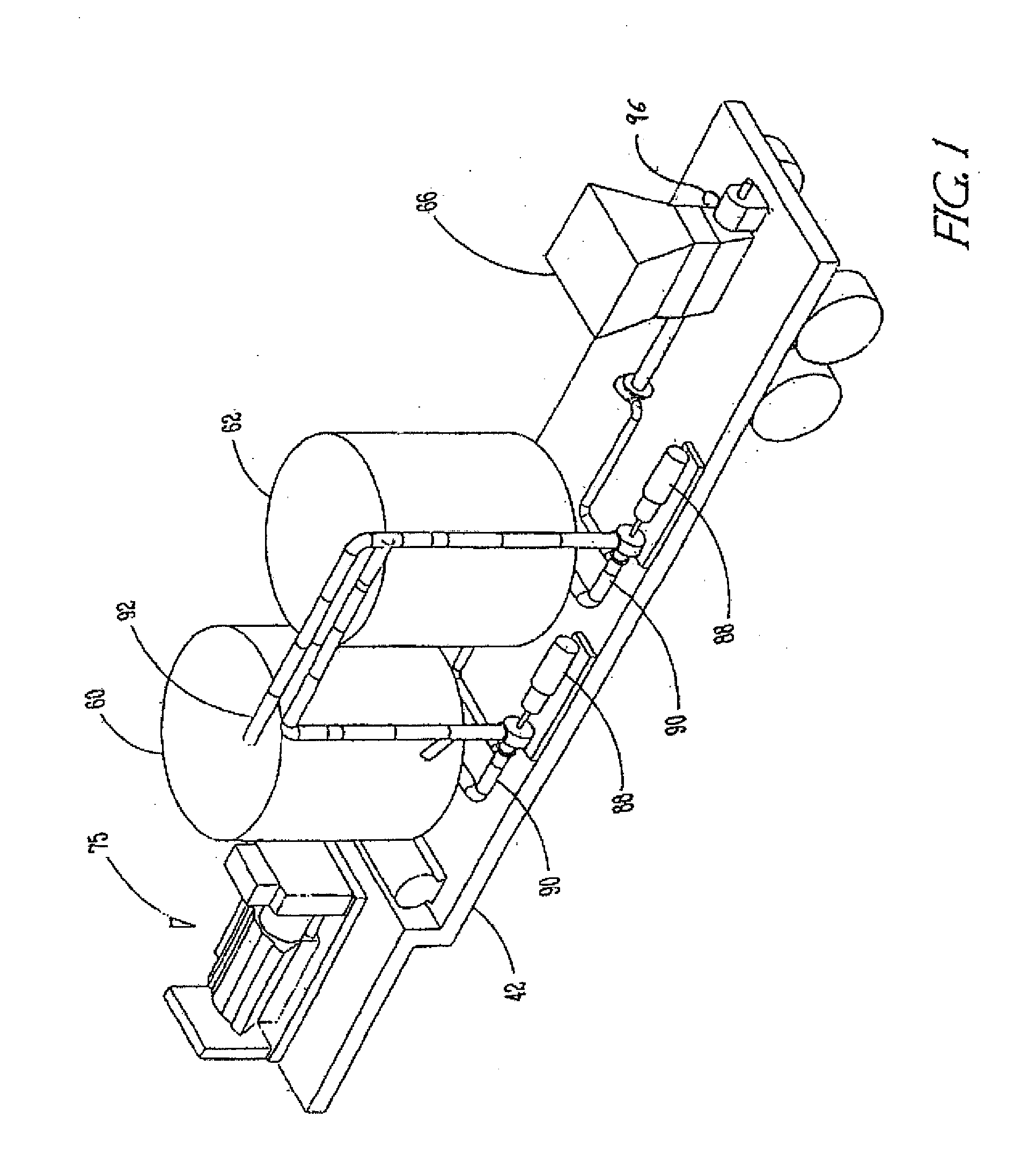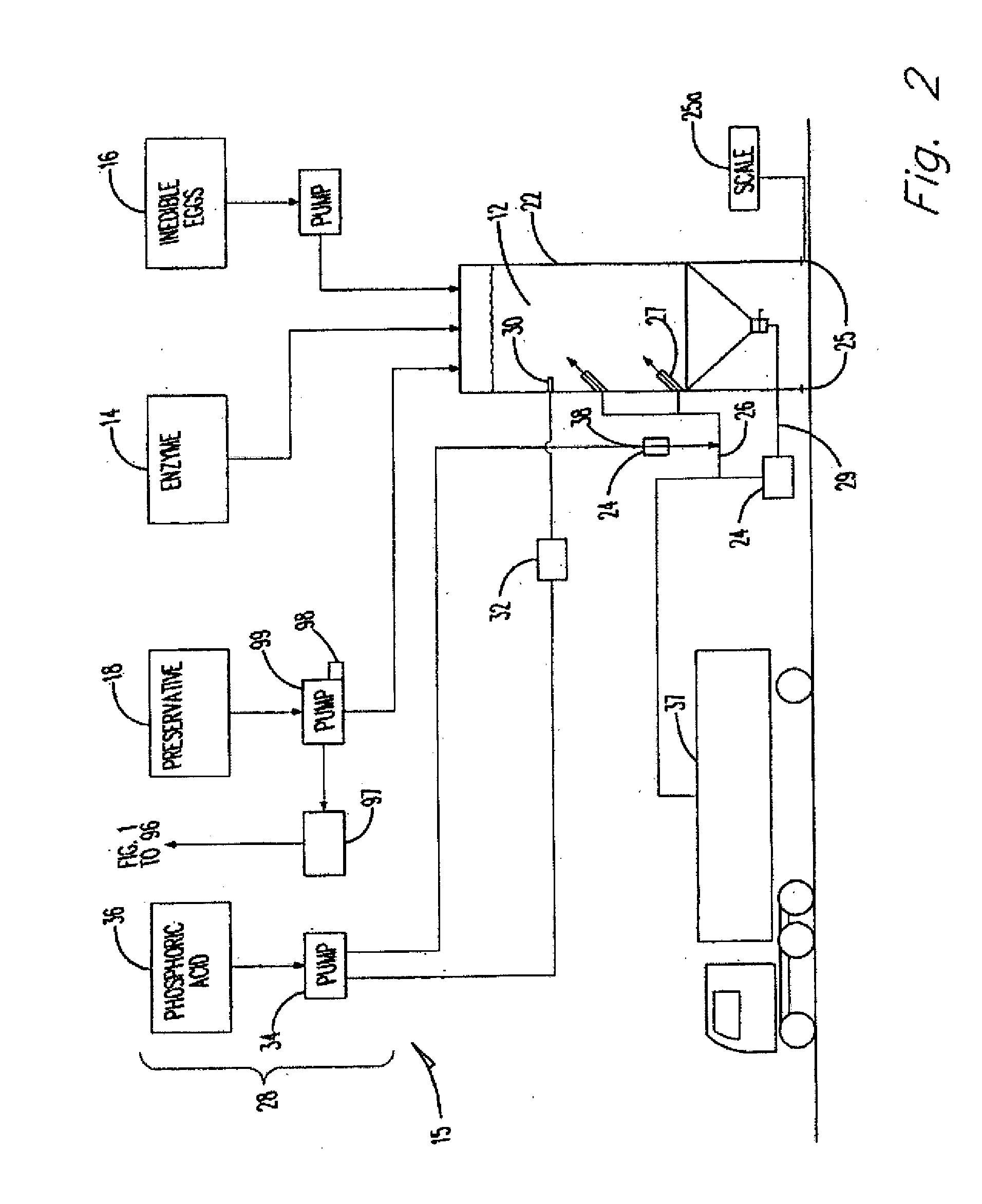Apparatus for Recycling of Protein Waste and Fuel Production
a technology of protein waste and apparatus, which is applied in the field of apparatus for recycling protein waste and fuel production, can solve the problems of animal production facilities posing problems for disposal, odor and generation of bacteria in buildings, multiplying and destroying the quality or usefulness of processed protein waste, etc., and achieves the effect of preventing gas backflow
- Summary
- Abstract
- Description
- Claims
- Application Information
AI Technical Summary
Benefits of technology
Problems solved by technology
Method used
Image
Examples
Embodiment Construction
[0036]Example embodiments provide an apparatus and process usable for, amongst other things, naturally recycling protein waste. In example embodiments, the apparatus and process for naturally recycling protein waste may include an enzymatic digest mixing assembly shown generally as 15 in FIG. 2, a mobile grinding assembly shown generally as 40 in FIGS. 3 and 4, a digesting and emulsifying assembly shown generally as 100 in FIG. 5 or a fermentation assembly shown generally as 200 in FIG. 6, and a drying system shown generally as 126 in FIGS. 7 and 8. These components may all be present on a movable platform or separated; for example, the mobile grinding assembly may be movable while the enzymatic digest mixing assembly is stationary.
[0037]In example embodiments, the process, as is shown in the flow chart depicted in FIG. 9, may include an enzymatic digest medium 12 of a particular pH level that may be prepared and stored until such time as it is needed. The enzymatic digest medium 12...
PUM
| Property | Measurement | Unit |
|---|---|---|
| pH | aaaaa | aaaaa |
| pH | aaaaa | aaaaa |
| temperature | aaaaa | aaaaa |
Abstract
Description
Claims
Application Information
 Login to View More
Login to View More - R&D
- Intellectual Property
- Life Sciences
- Materials
- Tech Scout
- Unparalleled Data Quality
- Higher Quality Content
- 60% Fewer Hallucinations
Browse by: Latest US Patents, China's latest patents, Technical Efficacy Thesaurus, Application Domain, Technology Topic, Popular Technical Reports.
© 2025 PatSnap. All rights reserved.Legal|Privacy policy|Modern Slavery Act Transparency Statement|Sitemap|About US| Contact US: help@patsnap.com



